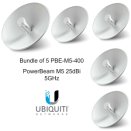Podcast: Play in new window | Download | Embed
Subscribe: Apple Podcasts | RSS
Yes, obviously and I will tell you why. However, many people say that the auto industry needs 5G. Here is something I read about all the
time. The fact that everyone says we need, I mean absolutely need 5G for vehicles. I’ll let you in on a secret, you don’t. I am a big fan and advocate of 5G, but I want to set the expectation properly.
They are already connected!
Cars are already connected. They can be hacked, and they are already feeding data back to the manufacturer. This is all good because they want to know how to improve the vehicle. Don’t get me wrong, chances are good they could abuse their rights and invade your privacy. The manufacturers won’t because they have too much to lose. They don’t need 5G to do this. They just need a data connection.
They will ask about autonomous cars, you know, self-driving cars. That is being done today as well, ever hear of Google, Lyft, or Uber? They have all tested this successfully. It works today without 5G.
So why would we need 5G? Well, first let’s look at why we don’t need it. Any car should have the smarts to handle the problems on its own. What I mean by that is that the electronics in the vehicle are there  for a reason. They are going to provide the data, controls, autonomous driving without any outside help. The idea is that it can work with or without connectivity. Vehicles need to be smart, smarter than your smartphone. They can have the delays in it that your smartphone does. However, they should have a specific task for each thing they do, especially if they are driving for you. It must be alert and quick to respond whether it has a connection or not.
for a reason. They are going to provide the data, controls, autonomous driving without any outside help. The idea is that it can work with or without connectivity. Vehicles need to be smart, smarter than your smartphone. They can have the delays in it that your smartphone does. However, they should have a specific task for each thing they do, especially if they are driving for you. It must be alert and quick to respond whether it has a connection or not.
Can’t they just talk to each other?
Next, let’s look at car to car connectivity. I think this is very important because the vehicles can alert each other faster than going through any network. If a vehicle is 200 feet ahead of you has an accident, then it would be great if a mesh system could send a quick alert back from car to car to car until it reaches your vehicle, in minimal time. Again, without the delay of any network. They need to talk to each other to make this work, and it must be quick short data bursts. FYI – I see a hacker having a field day with this, but that is beside the point.![]()
Again, why 5G for the vehicle?
So why the need for 5G? I don’t think we need 5G, just 2 types of remote connections. It would be great to be able to gather the data like we do today. It would be great to feed data to the vehicle, like updated maps, weather, traffic, and so on. This would be nice to do without the aid of a smartphone. However, if your smartphone does it, why pay for the car to be connected?
It would be nice to have your car be a Wi-Fi or LTE-U hotspot, again, your smartphone can do this, at least the Wi-Fi part today.
I think the IOT play is huge here for the gathering of data and the updating of vehicles. It would have to be very low latency to have the vehicle send back real-time data, in case of an accident. It could alert the authorities if there is an accident in real time and send back a real-time damage report. You know, if someone is hurt, where they ![]() are at, and any other alarms that are available. Other alarms like airbags deployed or something like that. Maybe even give a report of the impact details if that is available. Make sure this device has a backup battery so if the car battery is destroyed, then it can continue to work beyond the life of the car, like a black box for a plane.
are at, and any other alarms that are available. Other alarms like airbags deployed or something like that. Maybe even give a report of the impact details if that is available. Make sure this device has a backup battery so if the car battery is destroyed, then it can continue to work beyond the life of the car, like a black box for a plane.
So, we don’t really need 5G for any of this, but 5G paves the way for all of this in the requirements we know about.
Great power requires great responsibility!
However, like Uncle Ben said in Spiderman, “with great power comes great responsibility.” This means that the governments everywhere will have the ability to see where you are at any time, maybe even activate a camera in your car to see you. They could control your car with you in it. Think about that. Again, a hacker’s dream but a government worker’s prime directive.
Would they do it? I don’t know. Would they monitor every phone call? Would they tap into every smartphone? Would they monitor all the cameras out there? Would they do this without a warrant? You tell me. They always do it on all the movies, that’s all I know. On TV shows they can crack into any camera anywhere. Meanwhile, I am trying to remember what the hell the password is to log into my bank account! I don’t remember changing that password. Is the caps lock on? Yet, on TV, they hack into a car doing 80 down the highway. Meanwhile, I am wondering why the stupid GPS is taking me through a cow pasture! Sorry, I digress, back to the vehicle story.
Seriously, do we need 5G for the vehicles?
Back to the question at hand, do we need 5G for vehicles, not? It would be nice, and it would be the next step in the evolution of self-driving cars, traffic control, and improving travel in most countries. I would like to think it would minimize accidents and traffic-related deaths. I see a lot of good. Again, there is good and bad because hackers could reach something that could kill you. The government could monitor your every move without you knowing it. They can do that now with your smartphone, so maybe that is a moot point.
The fact that 5G essentially will offer 2 advantages in one system, more or less, of ultra-low latency and extreme broadband makes the car connection perfect for the system. It will advance us quickly, even faster than we are moving today. Soon we will rely on the car to pick us up, and we may not have to drive in 30 years or so because the car will do it for us. Why not?
The 5G system will help us break more barriers, and autonomous cars are one of them. We could potentially get away from the gas vehicles and move to an electronic society. We have a long way to go, but the wireless connections that 5G offers would help us make significant improvements. We could learn how to improve battery life and all the other aspects of any vehicle. Tesla is doing much of this today to make it happen. They make changes that will improve the driver’s experience and the vehicle going forward. That is forward thinking in real time.
What about autonomous industrial vehicles using 5G?
Now, let’s look at the industrial use. That’s right! We always look at the masses for this type of technology, but industrial vehicles have a big part in making this happen. They have been doing autonomous vehicles for years, without 5G and sometimes without any  connection. That’s what I think we need to understand. The vehicle must be smart. Having a wireless connection will make it smarter everywhere. It’s already out there with wireless connectivity, for more than just data, but it’s been a long time coming.
connection. That’s what I think we need to understand. The vehicle must be smart. Having a wireless connection will make it smarter everywhere. It’s already out there with wireless connectivity, for more than just data, but it’s been a long time coming.
Big trucks are vital to this ecosystem because drivers get tired. They could make mistakes. They could rest more often but be there to make sure nothing goes wrong. Also, if there is a dangerous substance, like gas or something explosive, the vehicle could have more sensors and alert authorities when it goes into a specific jurisdiction, this would allow the local PSAP know what is on the roads at all times. They could track it real time, and they could also know before anyone calls if there is an accident. This would save crucial minutes if the vehicle has a spill and no one is around to report it.
Tractors are already being used without drivers. This didn’t need wireless connectivity, just a GPS connection and a kick-ass computer in the tractor. They can take care of the field work and self-correct their path when needed. They are good at doing all those functions. The wireless network makes it even better, so you can see what’s happening and collect all the real data time. John Deere is a pioneer in this technology because they are breaking into a new market of the next generation of tractors.
Dump trucks and dozers are already becoming more and more automated. Dump trucks primarily because they generally travel a specific route to get the dirt from point a to point b, so simple a machine can do it.
Autonomous bulldozers are in the mix. They can move the dirt in a specified area where there is a lot to be taken out. I am not sure how they know how much to remove, but I have articles below stating that they can do it. Again, they don’t need the connectivity. They need a GPS NAV system to make it happen. The wireless connectivity helps alert people when there is a problem or to remotely control it if necessary.
What about the money trucks? I mean armored vehicles. That could be automated as well. For all the armored vehicles out there, they could be controlled remotely so if something did happen the local guys could run, or if they can’t then the vehicle could return to its destination without anyone driving it or to the local police station. If they had connected cars, the driver and security guard could wear cameras at all times. This may help them in an emergency. It could be a game changer.
What about the military, they could track every vehicle in real time and understand what is going on. They are already doing this, but that’s all I can say about that.
Emergency vehicles could have the people work on the patient while the vehicle finds the fasted route to the nearest hospital. They could have body cameras on them that could connect to the vehicle always. The vehicle could be connected and alert the PSAP or hospital of what’s happening. Hospitals would have all of the data prior to the vehicle getting to the hospital. They could have the blood ready, the medicine, the ER workers all prepped for that specific emergency. It could all be automated and proactive.
Does this really need 5G?
So, we don’t need 5G, but it will make the vehicle experience 1,000 times better! Excellent I say, but again, we need to make sure we have our privacy and security. I hope we can have both, but I think we’ll start with security.
Remember that we already have autonomous cars without 5G. Remember that companies like John Deere and Komatsu are already using autonomous industrial vehicles. Remember that Uber and Lyft are already doing this. It’s amazing that these companies are so far ahead of the curve. They didn’t need 5G, but I would bet they are going to love having high-speed and low latency to connect to connect to the vehicle. I think they are all hoping this technology helps them improve data collection and upgrades. I would put money on the fact that they are counting on this being a game changer for their industry. But hey, that’s me and my vision of the future.
The fact that we will have vehicles out there doing the work for us will free us up to worry about other things, like how we plan to roll out 5G to the world. I would love it if I didn’t have to drive at all. That would be great. I think it’s cool that all those big utility vehicles could do the tedious work without having a human intervene or get hurt. Freedom never looked so good! Or cool for that matter.
What does this mean for the wireless systems?
So glad you asked! It means that we don’t need 5G or wireless to make the autonomous vehicles work. We do need wireless to collect the data, do updates, monitor what’s going on, get real-time analytics, get emergency alerts. This all adds up to a system that will make 5G more efficient. Why? Because some of that data can be an IOT function, which means low latency and short data bursts while all the data collection and upgrades could be on the broadband network. Both can be handled beautifully on the 5G system.
This is not going to be an easy road to follow. The automakers are nervous because the days of mass appeal are winding down. Many people would rather have an autonomous vehicle take them somewhere versus owning a car, in urban markets anyway. Some of us do not trust self-driving cars, but we didn’t trust cell phones at one time, nor computer, nor anything else that was so new it looked like magic, not science or technology.
Now we have the option to get into a smart vehicle and leave the driving up to a machine. How nice is that?
If you’re in the service business, don’t worry, we must drive to our sites and carry all the parts with us. We’re stuck driving at least part of the way.
The wireless carriers are counting on the systems connecting everything; this is a primary goal for them. They want the business, and it sounds sexy. They look at every vehicle as a potential customer. Look at OnStar, what a successful service. If AT&T and Verizon can tap into that business, they will. I am sure T-Mobile and Sprint would too. It’s low revenue per vehicle, but if you get over a million vehicles, it adds up to a great business.
The department of transportation is holding on the dream of using the DSRC which is dedicated short-range communications in the 5.9GHz band. Why? Because this band is open, and the vehicles could talk to each other. It makes more sense than going through the entire network and across any cloud to talk. You want the real-time communications for each vehicle. This is a particular application for the vehicles to talk in a mesh system. It would also have radios on poles that could relay the messages and collect data real time. The DSRC is a great idea; unfortunately for the DAT, it won’t happen unless they pay for it. Most smart city initiatives are strapped for cash and rely on the public-private partnerships, (PPP), to make things happen.
The cities I have worked with rely on grants or tax dollars for what they want, but they love getting private business in the act if they are willing to pay for something. Colleges are a great resource; they can often come up with funding if you can get through the bureaucracy to get the funding.
So, if your thinking other systems will support this, guess again, 5G will be the desired choice just because the carriers will work to make this happen. All the others appear to be one-offs. The DSRC will happen in the vehicles because the automakers are making it happen. The cities will have a minimal investment, and I would think that the larger cities will invest in this. Especially Detroit where they have so much to gain. Colleges would love to tap into this because they would learn a lot about human driving behavior. I would also think the insurance companies would see the value here merely for the data. But, time will tell.
- http://www.bigag.com/topics/equipment/autonomous-tractors-future-farming/
- https://youtu.be/T7Os5Okf3OQ
- https://www.wired.com/story/embark-self-driving-truck-deliveries/
- https://www.technologyreview.com/s/603493/10-breakthrough-technologies-2017-self-driving-trucks/
- https://youtu.be/c7AOVJPtxTI
- https://gizmodo.com/this-giant-autonomous-dump-truck-doesn-t-have-a-front-o-1787133684
- https://newatlas.com/komatsu-autonomous-truck-mining/45627/
- https://newsroom.intel.com/wp-content/uploads/sites/11/2017/05/why-5G-for-ad-fact-sheet.pdf
- http://www.businessinsider.com/how-5g-will-drive-the-adoption-of-self-driving-cars-2017-12
- https://www.theverge.com/2017/10/19/16502868/built-robotics-autonomous-bulldozer-excavation-google
- https://www.asirobots.com/mining/dozer/
- http://pluto.tv/viral/bulldozer-paving-way-autonomous-construction-vehicles
- https://www.its.dot.gov/presentations/world_congress2016/Leonard_DSRC_Spectrum2016.pdf
Resources:
Resources:
See Ya!
Go crazy and follow me on WordPress, Amazon, Twitter, LinkedIn, or Facebook.
Just click and follow! Thank you!
Get all your updates via email!
Sign-up to get all your updates!









 Putting together your smart city tech solutions, planning, development, and more….TechFecta! Guiding you to a better plan through consulting!
Putting together your smart city tech solutions, planning, development, and more….TechFecta! Guiding you to a better plan through consulting!






















 Get the massive MIMO FULL in-depth report today!
Get the massive MIMO FULL in-depth report today! 
